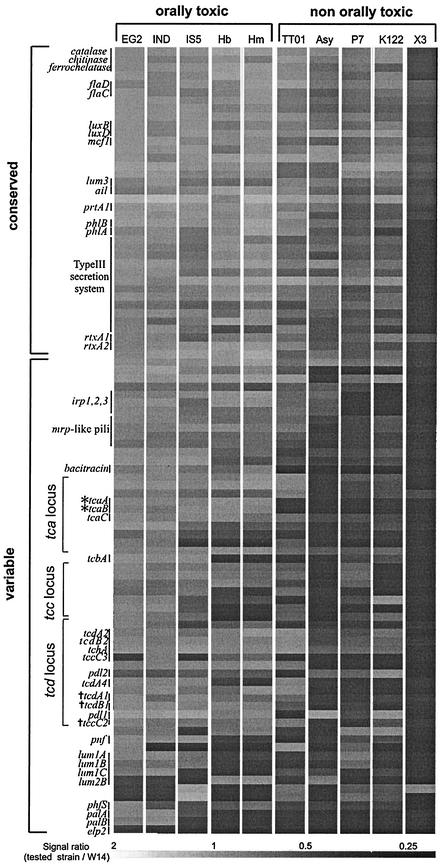FIG.2.
Hybridization ratios for the 96 genes in the W14 array hybridized against the nine Photorhabdus strains and one Xenorhabdus strain. Photorhabdus strains are arranged into those showing orally toxic supernatants and those showing nontoxic supernatants. The 96 W14 genes are arranged into groups predicted to be present (conserved) in most Photorhabdus strains or absent in some strains (variable). Specific groups of genes discussed in the text are labeled. A hybridization ratio of >2 predicts more than one copy of a gene; 0.5 to 2 predicts the presence of a single copy of the gene or a homolog; and <0.5 predicts the absence, or significant sequence divergence, of the gene. A table of gene names, putative functions, and the sequences of the arrayed PCR products is posted at http://staff.bath.ac.uk/bssrffc/downloads.html as supplementary information.

